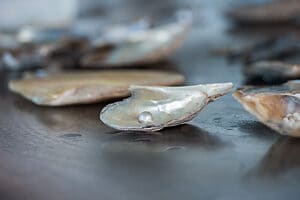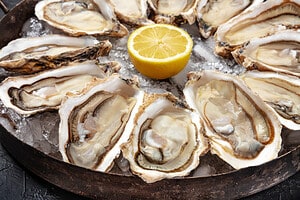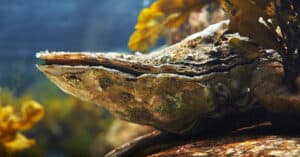Humans have been eating oysters for thousands of years. These incredible marine animals have unique anatomy and intriguing lifestyle. Going by the scientific name Ostreidae, oysters belong to the class Bivalvia.

What else should you know about these ancient aquatic beings? Read on to learn 10 incredible oyster facts.
1. Oysters Have A Weird Body
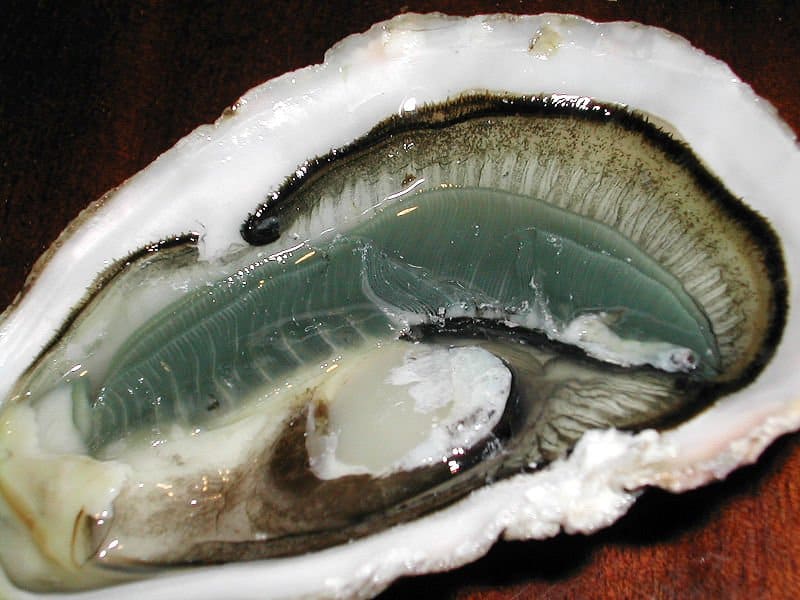
Oysters have muscles that open and close their shell.
It might be hard to imagine because they’re so small and simple, but oysters have complex and strange bodies. Oysters are bivalves, animals with hinged shells. There are only about 7,500 bivalve species in the world.
Oysters have eyes covering their bodies to escape even the sneakiest predators. They also have hearts and internal organs.
Furthermore, oysters have an adductor muscle that’s similar to our biceps. Some oysters are more buff than others, with more robust, bigger muscles.
The powerful adductor muscle keeps the oyster’s shell closed. To open its shell, an oyster will use the hinge muscle.
Even though an oyster has a heart and muscles, it doesn’t have any type of head. It also doesn’t have a central nervous system. Since they don’t have a central nervous system, oysters will not likely feel any pain. A lot of people who are vegans or vegetarians feel comfortable eating oysters because of this.
2. Oysters Have Gills
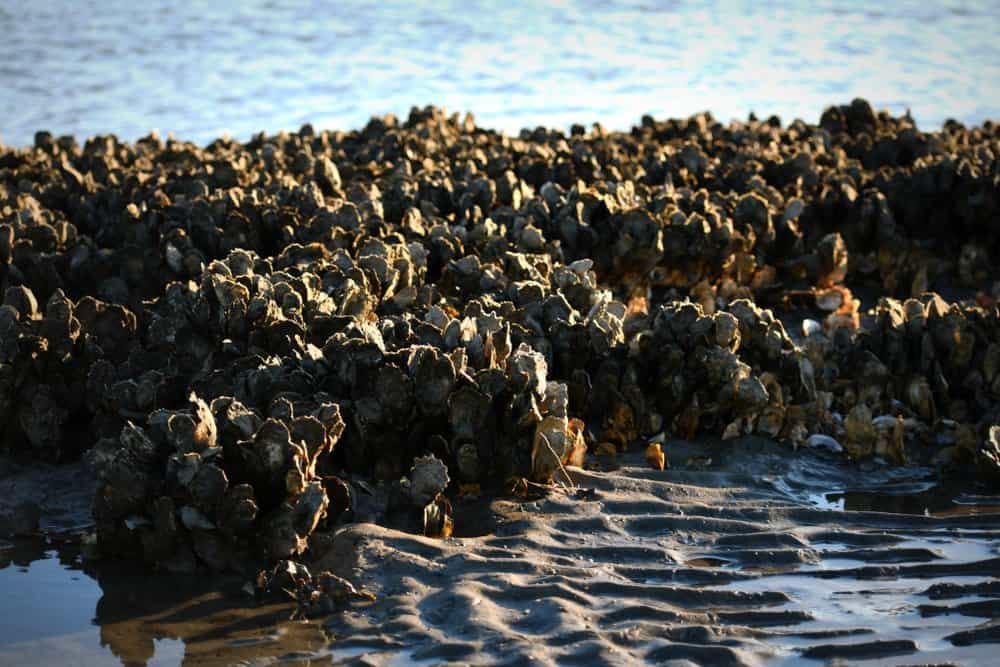
Oysters use their gills to filter food.
©Kim McGrew/Shutterstock.com
Oysters have gills! Similar to fish, an oyster has four layers of gills. However, instead of using their gills for breathing, oysters use them for eating. The gills are the perfect tool for filtering algae particles and plant bits.
These ocean particles stick to the gills, and the oyster can move them up to its mouth. While an oyster doesn’t have a central nervous system, it does have a process for detecting food. When there’s a meal nearby, an oyster knows. A mixture of circadian, lunar, and tidal cycles helps them know when it’s time to open its shell and when it’s time to stay shut. The way oysters eat classifies them as filter feeders.
3. Oysters Are Picky Eaters

One food source that oysters prefer is phytoplankton.
©GizemG/Shutterstock.com
Oysters are omnivores. They eat a diet consisting of plants and animals. However, an oyster isn’t going to eat every bit of plant material that it comes across. Oysters are picky eaters. They’re very selective in the algae and plant materials that they take in. For instance, one of the oysters’ favorite nutritional snacks is plankton. Anytime they come across bits of plankton, they gobble it up. Oysters also enjoy eating phytoplankton, zooplankton, bacteria, seagrasses, and dissolved organic matter.
4. Oysters Clean Up Bodies Of Water
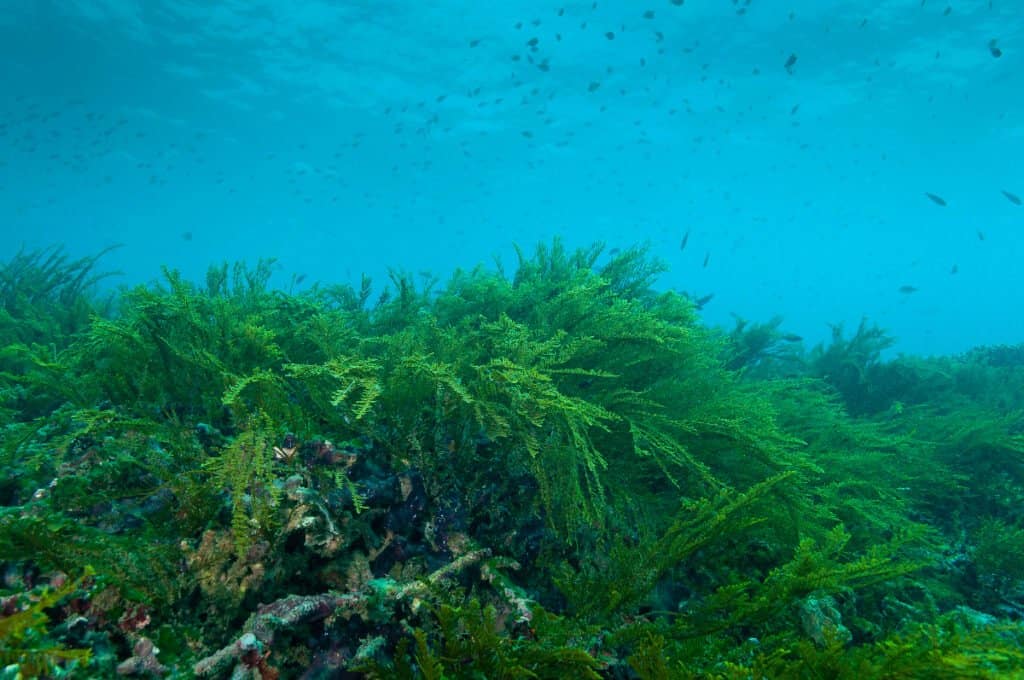
Oysters help prevent algal blooms.
©Jesus Cobaleda/Shutterstock.com
Nitrogen and phosphorus are necessary for coastal ecosystems to support marine life. However, too much nitrogen and phosphorus can be dangerous. Human activities like farming or poorly designed septic systems can dump too many nutrients into the water. This can cause high algae levels, often called an algae bloom.
Thankfully, oysters can remove the particles before they have a chance to create an algal bloom. A single oyster can filter as much as 50 gallons of water daily! They’ll consume the excess nutrients as part of their daily diet. They also improve water clarity, stabilize pH levels, and prevent harmful algae blooms. Overall, oysters help prevent degradation and oxygen depletion in the water.
5. Oysters Can Poop

Oysters clap shut when they are ready to poop.
©Pix Box/Shutterstock.com
Oysters poop! Oysters are filter feeders; waste collects inside their shell cavity as they digest food. Alongside the waste, oysters also contain what’s known as pseudofaeces. Significant bits of food that the oyster can’t digest, along with bits of sand, make up the pseudofaeces.
The oyster covers the sand and significant bits of food with mucus and stirs them next to its feces. The oyster will clap its shell together when it’s ready to relieve itself. As the shell claps together, the oyster can push the water out of its body and eliminate any waste. Even though oysters poop, they leave the water cleaner than they found it.
6. Oysters Look Different In Different Environments

Categorizing oysters is tricky because their look varies depending on where they are.
Oysters have a unique ability to change their look depending on their environmental conditions. This is known as having high phenotypic plasticity. It’s a trait a lot of plants have.
Phenotypic plasticity means the same species can look completely different, depending on where you find them. This can make things difficult for scientists who work hard to classify oyster species.
7. Oysters Can Change Sex

Oysters vary in sex depending on their environmental conditions and different physiological stressors.
©wasanajai/Shutterstock.com
Oysters have the option to change sex. Oysters vary in sex depending on their environmental conditions and different physiological stressors. They might also change sex depending on the sex of the oysters around them.
The eastern oyster begins its life as a male. However, later in life, he transitions and becomes a female. There’s even proof that Eastern oysters might be able to change their sex more than once in a lifetime. Now that’s incredible!
8. Salt Helps Oysters Grow Faster
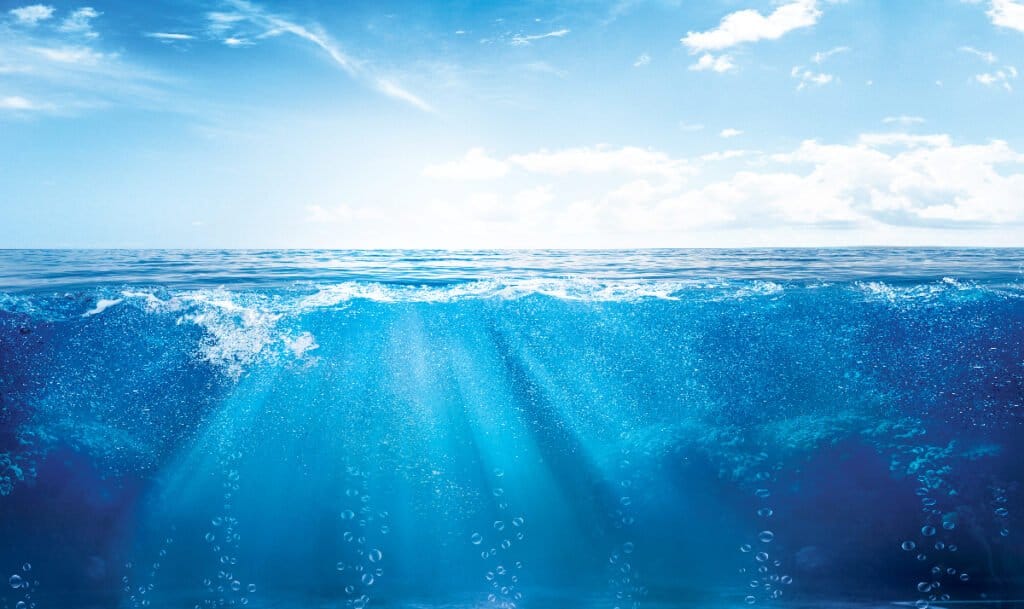
The amount of salt in an oyster’s environment can dictate its size.
©PHOTO JUNCTION/Shutterstock.com
Next, on our list of incredible oyster facts, let’s talk about growth. An oyster will usually grow 1 inch every year. However, sometimes they’ll grow faster if they live in an area with high salinity. An oyster’s ability to respond to the salinity in its environment begins when it’s a baby oyster. Oyster larvae practice receiving environmental and chemical cues. If anything about its environment isn’t suitable, the cues will let it know to settle elsewhere.
9. Oyster Shells Were Used As Mortar

Oysters were used as New York City building materials in the 1700s.
©shutterupeire/Shutterstock.com
Until the 1700s, New York City had an overabundance of oysters and gigantic oyster shells. There were so many oversized oysters that New Yorkers would repurpose discarded shells into mortar paste. The oyster-made mortar paste was used to build all sorts of buildings across the city. Trinity Church is one example of a building constructed using oyster shells.
10. Oysters Have A Ton Of Flavors
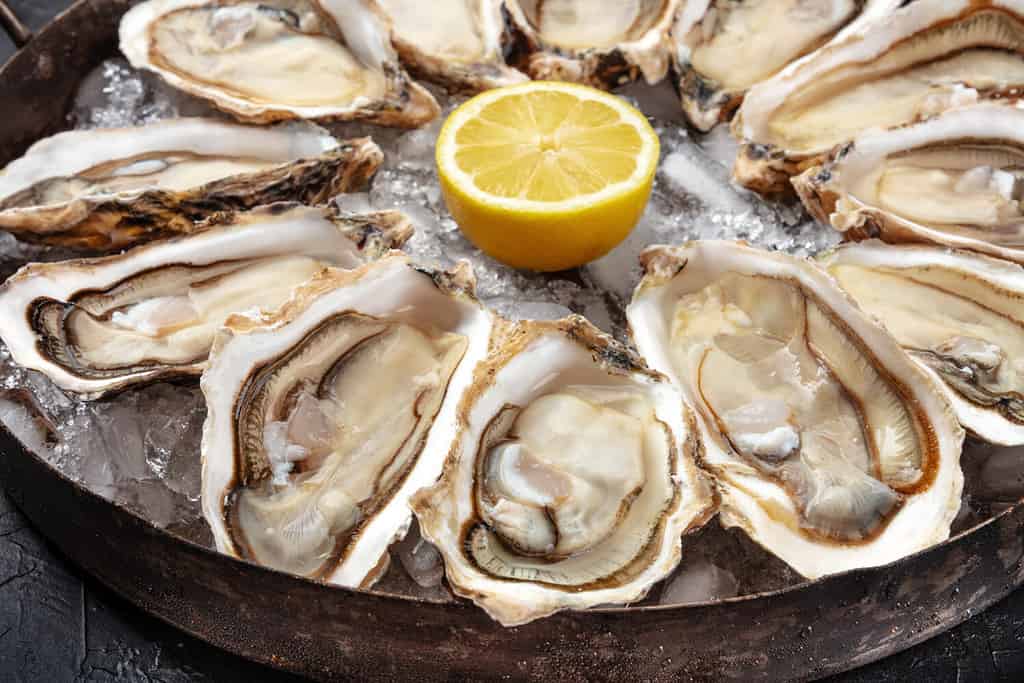
Depending on where you get them, oysters can vary in taste.
©Plateresca/Shutterstock.com
Oysters change flavors depending on their environment. You could eat an oyster on the West Coast, and it’d taste utterly different than oysters on the East Coast. Their textures also change from one place to the next. East coast oysters are famous for having silky meat, while West coast oysters have more creamy and custardy meat.
Oysters on the West and Gulf coasts have a mild, almost salty taste. At the same time, Pacific oysters have a vegetable flavor that’s almost like cucumbers. They can be quite refreshing!
Did you want a full-flavored oyster that hits every mark? Go for the Atlantic ones. Atlantic oysters usually have a mushroom/fish flavor that’s deep and satiating. Mmmmmm!
The photo featured at the top of this post is © wasanajai/Shutterstock.com
Thank you for reading! Have some feedback for us? Contact the AZ Animals editorial team.




